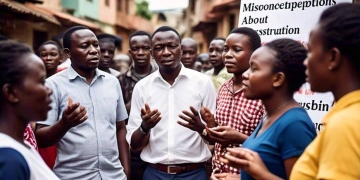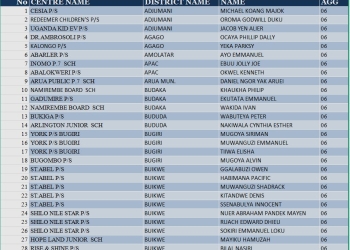
NAMUTUMBA – A community-owned insurance plan is giving families access to treatment at Bukonte Health Centre III-a private-not-for-profit local facility, for less than a fraction of what non-members pay at the same facility.
The group members under their umbrella association, Bukonte Health Insurance Scheme in Nakawunzi village, Naikonja sub-county in Namutuba District are running a bottom-up community-driven approach to increase access to health services.
Dominic Sabuka, the group vice chairman told a group of news reporters that members of the community insurance plan pay an annual fee ranging between Ugshs8,000-Ugshs28,000 for health coverage at Bukonte Health Centre III. These contributions, he said are saved towards reducing the out of pocket expenses associated with seeking health care services.
Subuku said the scheme which is about five-months old provides financial protection against any unforeseen cost of illness for community members. “The plan covers a wide range of health care services including maternity, routine tests and minor ailments.” he elaborated citing that in four months only, the group has registered over 800 members, with majority being women.
ActionAid International Uganda (AAIU) with funding from European Union (EU) helped in the initiation of Bukonte Health Insurance Scheme and facilitated its leaders on a benchmarking trip to Kisiizi Health Insurance Scheme which has existed since 1996 where they adapted good practices.
“What we saw there (at Kisiizi), gave us the confidence to start. We adopted their model and introduced it to the existing groups in Bukonte,” Subuka said.
He explained that the social health plan committee is responsible for sensitizing the community, registering new beneficiaries, collecting premiums and remitting them at the health centre. Committee representatives meet each month with health facility authorities to review progress of the insurance scheme.
The committee on a monthly basis review financial record to ensure all payments and disbursements are accounted for.
Ethel Naigobye, a mother of six who has been in the scheme for three month now says the community insurance plan has freed up resources for other household needs.
“Since we (my family) joined Bukonte Health Insurance Scheme, we don’t have to worry about money especially when we fall sick and don’t have it,” Naigobye Ethel said.
She assailed government health centers in Namutumba as inefficient. Earlier on, Sabuka had also told reporters that members of the Bukonte Health insurance scheme are shunning public health centers due to long lines and absent staff.”
Naigobye however, asked Action Aid and EU to keep supporting them for another year as they learn the undercurrents and other gray areas of social insurance schemes.
The European Union delegation in Uganda representative, Elizabeth Ongom tipped the group members on the dynamics of the social insurance schemes, telling them off that “social insurance can’t solve all the problems.”
“I am not here to discourage you but you should know it very well that social insurance can’t solve all the problems but can cater for some,” Ms. Ongom urged. She warned women against using the scheme as a shield to produce unmanageable numbers of children.
Ms. Ongom however said the EU will be focusing on other development areas such roads and agriculture due to resource constraints.
Ms. Shibah Namulindwa, the ActionAid International Uganda Programmes Coordinator in Eastern Uganda urged the group to continue working together but also form other working relationships with other development partners until they are able to fully sustain their social health plan.
Cost of health care in Uganda
The cost of health care threatens to widen Uganda’s inequality gap, as many patients must choose to either pay medical bills or protect their livelihood.
Only 1% to 2% of Ugandans use private insurance, according to the National Health Insurance Scheme bill proposed in 2020, but private care accounts for more than 40% of patients’ total health spending.
Private care can be costly. In a country with a gross domestic product of $777 per capita, a routine gynecological exam may cost $15.
Uganda is the only country in East Africa that has not passed a national health insurance scheme and has some of the highest out-of-pocket costs for health in the region. An estimated 38% percent of Uganda’s health expenditures are paid by individuals through out-of-pocket costs, followed by development partners (41%), the government (16%), and others (5%).
Uganda’s current health insurance options are employer or community-based schemes and are estimated to cover less than 2% of the population.
Health insurers only contribute around 1% to health spending in Uganda.
Government efforts
However, Uganda government has continued to provide subsidies to private-not-for-profit health providers to lower user-fees, while health care is provided for free in the public health facilities since 2001.
The country has also upgraded over 200 Health Center IIs to Health Center IIIs in a bid to ensure that every sub-county has a health facility at the level of Health Center III.

















